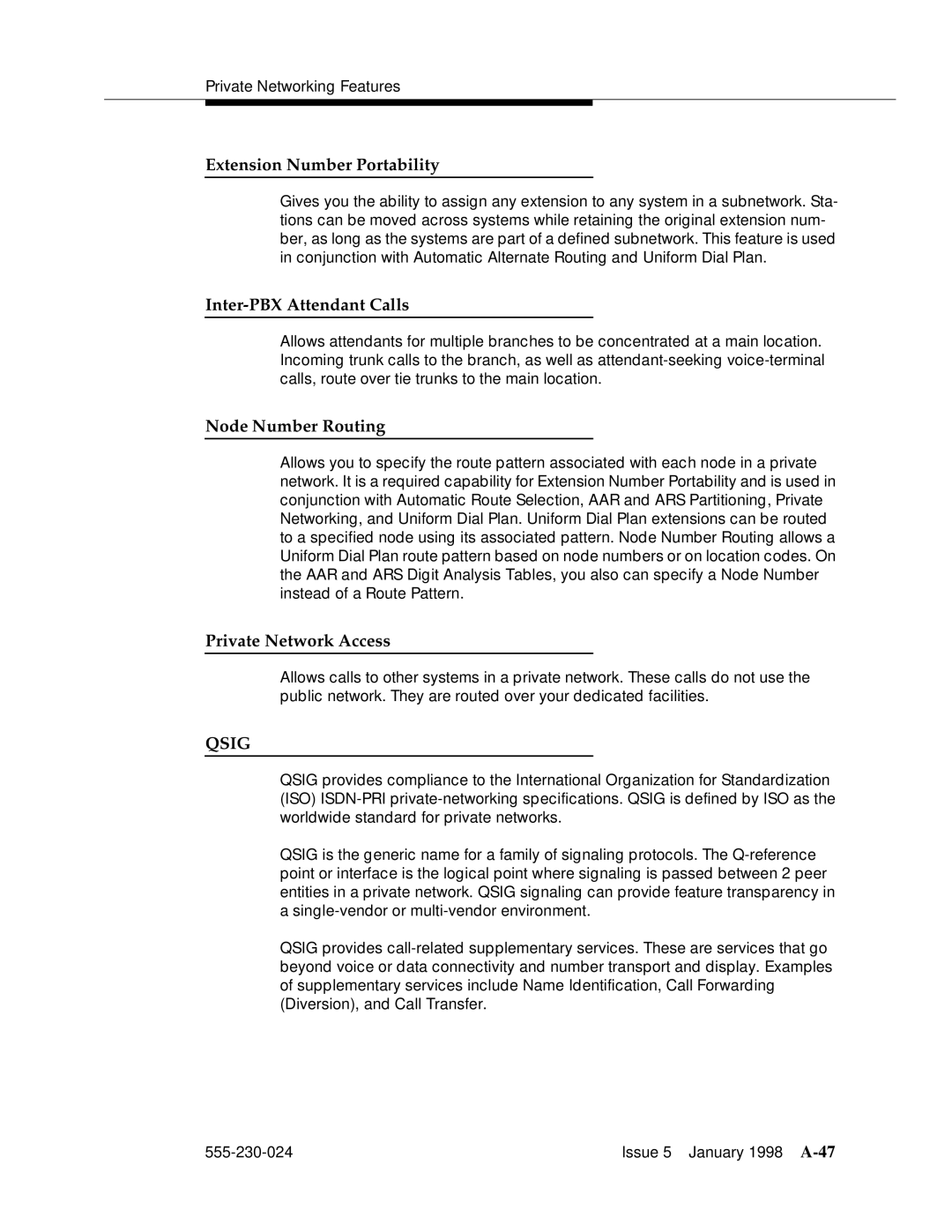
Private Networking Features
Extension Number Portability
Gives you the ability to assign any extension to any system in a subnetwork. Sta- tions can be moved across systems while retaining the original extension num- ber, as long as the systems are part of a defined subnetwork. This feature is used in conjunction with Automatic Alternate Routing and Uniform Dial Plan.
Inter-PBX Attendant Calls
Allows attendants for multiple branches to be concentrated at a main location. Incoming trunk calls to the branch, as well as
Node Number Routing
Allows you to specify the route pattern associated with each node in a private network. It is a required capability for Extension Number Portability and is used in conjunction with Automatic Route Selection, AAR and ARS Partitioning, Private Networking, and Uniform Dial Plan. Uniform Dial Plan extensions can be routed to a specified node using its associated pattern. Node Number Routing allows a Uniform Dial Plan route pattern based on node numbers or on location codes. On the AAR and ARS Digit Analysis Tables, you also can specify a Node Number instead of a Route Pattern.
Private Network Access
Allows calls to other systems in a private network. These calls do not use the public network. They are routed over your dedicated facilities.
QSIG
QSIG provides compliance to the International Organization for Standardization (ISO)
QSIG is the generic name for a family of signaling protocols. The
QSIG provides
Issue 5 January 1998 |
